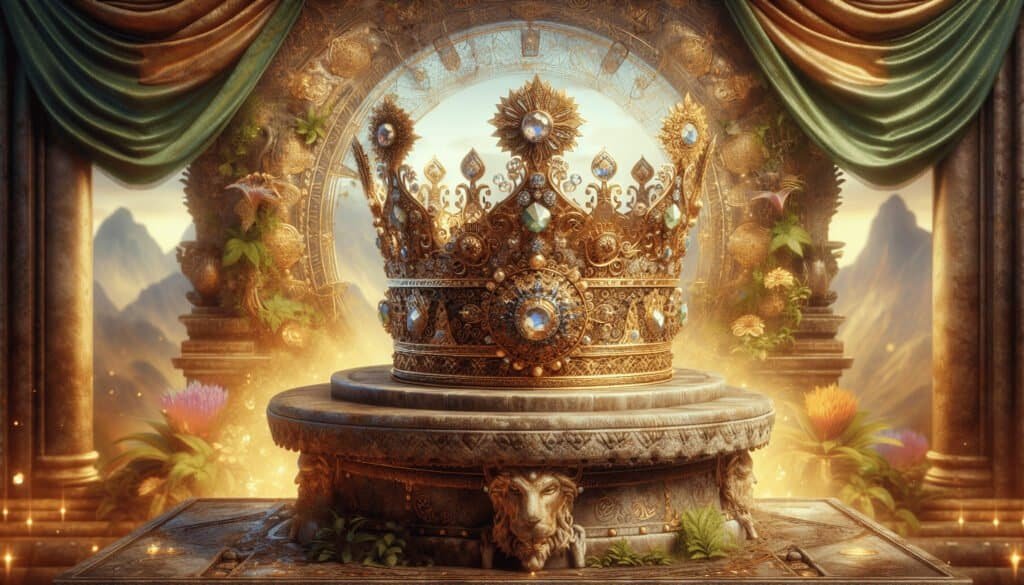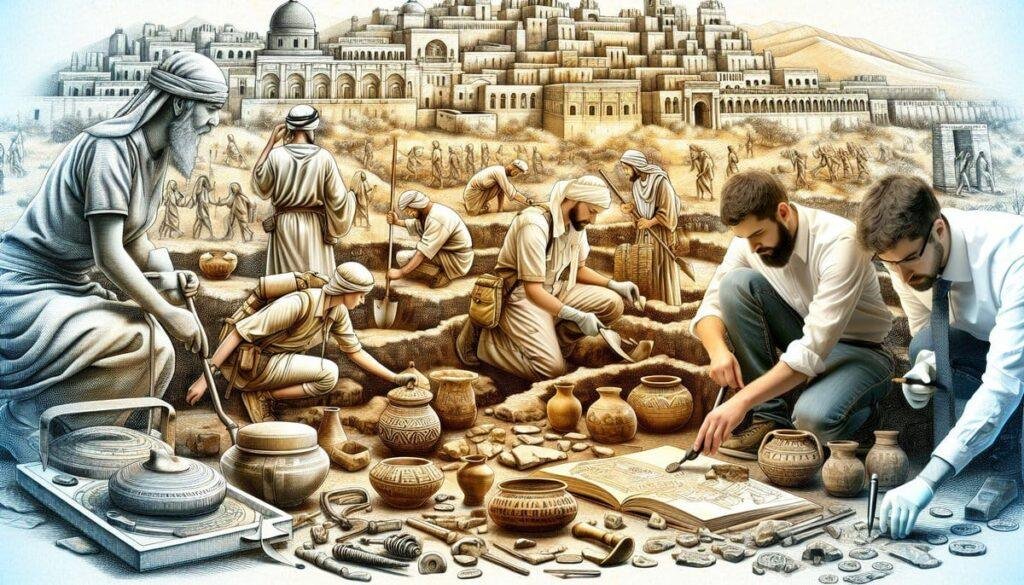Have you ever wondered what it would be like to receive a royal visitor, especially one as enigmatic as the Distant Queen? The elegant tales of ancient manuscripts and the rich threads of history provide a tantalizing glimpse into the immense significance of such visits. The story of the Distant Queen’s visit is a remarkable narrative intertwined with various cultural, theological, and historical significance that transcends time. Let’s unravel this engaging tale and see what gifts were offered to behold Ark’s glory, as well as what these gifts represent in a broader context.

The Distant Queen: A Brief Background
The Distant Queen, often identified as the Queen of Sheba, has intrigued scholars and laypersons alike for centuries. Although the exact origin remains contested, the legend typically traces her roots to the region at the crossroads of Africa and the Arabian Peninsula, thought to be modern-day Ethiopia and Yemen.
Historical Context of the Queen of Sheba
The Queen’s visit primarily finds its place in biblical narratives, particularly in the First Book of Kings and the Second Chronicles. You’re probably familiar with the tale of how Solomon’s wisdom attracted numerous dignitaries. The account of her journey features prominently in this story, showcasing her as a figure of great wealth, intelligence, and curiosity.
Biblical References: In 1 Kings 10:1-13, the Queen of Sheba visits King Solomon to test his wisdom. The narrative emphasizes her admiration for his knowledge and the wealth of his kingdom.
Cultural Impact: Beyond biblical texts, the Queen of Sheba has been a subject of art, literature, and folklore, inspiring countless adaptations that highlight her beauty and wisdom.
In historical discussions, the complexities of her identity remain rich for exploration—be it her roles as a leader, a trader, or a symbol of femininity and strength in a patriarchal age.
The Gifts She Brought
When the Distant Queen visited King Solomon, she came bearing extravagant gifts, which can tell us much about the values and exchanges typical of the era.
Valuable Treasures
The gifts offered by the Queen of Sheba were not merely about wealth; they were laden with meaning and representation.
Gold: The presence of gold signifies not just fiscal value but also sacred and divine attributes. Gold, as a precious metal, was often associated with the divine and wisdom. It serves as a metaphor for purity and enlightenment. This sacred association likely underscored the significance of her gifts.
Spices: The spices she brought were of unparalleled value, resonating with the ancient world’s taste and aesthetic appreciation. The specific spices often mentioned in biblical texts not only refer to their functionality but also to their role in rituals and celebrations, making them deeply symbolic.
Precious Stones: Just like gold and spices, precious stones are imbued with vast historical references. They were often used in royal regalia and signs of power. In a sense, her offering included more than material wealth; it proclaimed her status and the link between nations.
The Symbolism of the Gifts
When examining the gifts in greater detail, one discovers how they resonate on multiple levels:
| Gifts Offered | Symbolic Meaning | Importance in Culture |
|---|---|---|
| Gold | Wisdom, divinity | Represents wealth and status in leadership |
| Spices | Value and beauty, essential for trade | A key component for preservation, rituals |
| Precious Stones | Power, beauty | Showcases divine favor and trade relationships |
These gifts weren’t just luxurious; they were significant in establishing diplomatic relations and understanding between two cultures. It reveals much about ancient commerce and how such exchanges were used to symbolize mutual respect and admiration.
The Spiritual Significance of the Ark of the Covenant
Central to this narrative is the Ark of the Covenant, believed to house the very essence of divine presence.
Understanding the Ark
To fully grasp the significance, one must understand what the Ark represented. In simple terms, it was more than a mere artifact; it was a sacred object integral to Jewish worship and identity.
Biblical Description: The Ark is described in Exodus 25:10-22 as a gold-plated wooden chest containing the tablets of the Ten Commandments. The meticulous details offered reveal its divine purpose and design.
Historical Importance: Throughout biblical history, the Ark served as a focal point for worship, embodying God’s covenant with the Israelites. Its presence in battle, in the Temple, and throughout the wanderings in the wilderness denotes a protective and guiding force.
The Encounter with the Queen
Her journey to Jerusalem to see the Ark emphasizes the cultural and spiritual significance of such esteemed offerings. The encounter wasn’t just a meeting of royal interest but rather a convergence of two worlds under the aegis of divine kinship.
Wisdom Exchange: When the Queen meets Solomon, the discussion likely revolved around spirituality, governance, and wisdom—key themes that only deepen the association of the Ark with her gifts.
Cultural Interaction: The discussions symbolize an early interaction between different civilizations, showcasing how spirituality and governance intertwined in ancient societies. Through this exchange, both parties could partake in a shared narrative of faith and power.
Archaeological Insights: The Search for Sheba’s Treasures
Archaeological efforts to unearth the reality surrounding the Queen of Sheba and her gifts have been both compelling and revealing.
Unearthing Historical Context
While the Scriptures offer narrative accounts, archaeology attempts to substantiate these with tangible evidence of trade routes, artifacts, and the exchange of goods and cultural practices.
Trade Routes: The southern Arabian trade routes were critical in cultivating trade between Africa and the Near East. Excavations along these paths have unveiled significant trade goods and settlements, highlighting the interactions that may have prompted such royal visits.
Artifacts & Findings: Some archaeological sites in Yemen and Ethiopia have unveiled inscriptions and artifacts that may correlate with biblical accounts of the Queen, adding a layer of richness to the historical narrative.
The Role of Biblical Archaeology
Biblical archaeology serves as a bridge connecting modern interpretations of ancient texts with tangible evidence. You might find it fascinating how these findings can spark discussions that either confirm or challenge traditional beliefs about figures like the Queen of Sheba.
Interdisciplinary Studies: Engaging scholars from various fields, from archaeology to theology, can provide diverse interpretations of the artifacts uncovered. This leads to discussions on how such findings resonate with spiritual belief systems today.
Cultural Relevance: The significance of these artifacts tends to transcend mere historical curiosity; they foster dialogues about identity, heritage, and cross-cultural connections that remain relevant today.

Modern Perspectives on Ancient Gifts
Looking at the gifts offered during the Queen’s historic visit allows you to ponder on their relevance today. What do these ancient treasures say about our modern relationships and spiritual journey?
The Desire for Connection
The act of gift-giving, as showcased in this ancient narrative, serves as a profound symbol of connection. It evokes the universal longing for understanding, respect, and unity.
Cultural Exchange: In a world where globalization continues to shrink distances between cultures, the gifts of the Distant Queen resonate with how we express empathy, curiosity, and admiration across boundaries, whether personal or national.
Spiritual Gifts: The spirituality encapsulated within the gifts symbolizes an innate desire for wisdom, connection to the divine, and the pursuit of higher knowledge—a desire that remains deeply embedded within the human spirit.
Revisiting Wisdom and Intellect
The exchange between Solomon and the Queen often circles back to discussions on intelligence and governance.
Leadership Models: The models of leadership demonstrated through these interactions provoke thought about modern governance. The lessons derived from mutual respect, wisdom, and diplomacy are exceedingly relevant as we navigate contemporary political landscapes.
The Pursuit of Knowledge: Today’s pursuit of knowledge mirrors that of the ancient world. Both eras celebrate innovation, shared wisdom, and the impact that curiosity can make in bridging cultural gaps.
Conclusion: Reflections on a Timeless Encounter
As you reflect on the story of the Distant Queen and the opulent treasures she offered to behold the Ark’s glory, you unearth layers of significance that transcend time and culture.
The gifts she presented weren’t mere tokens; they were cherished symbols of wisdom, cultural exchange, and the confluence of spirituality and governance. The encounter highlighted the depths of human interaction, inviting dialogue about respect, understanding, and the richness of shared narratives that remain potent today.
In revisiting the gifts of the Distant Queen, you gain insight into how history often serves to illuminate the present. The values celebrated then—wisdom, spirituality, and the desire for connection—echo loudly in our contemporary lives, urging us towards deeper appreciation of our shared humanity. The journey to uncover these stories illuminates the importance of trust, expertise, and authority in our understanding of both the past and the modern world.


